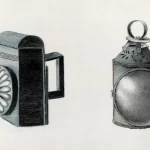USPTO Introduces Design Patent Practitioner Bar to Accommodate Surging Applications
- November 25, 2023
- By Sarita Thomas
- Read 2 minutes
Patent practice in the United States Patent and Trademark Office (USPTO) is undergoing a significant shift with the emergence of a specialized bar exclusively catering to practitioners engaged in design patent matters. This pioneering move by the USPTO aims to foster broader participation within the design patent domain, aligning with the soaring influx of design patent applications in recent years.
The formulation of a distinct design patent bar, proposed in May and recently solidified via a ‘final rule’ released on November 16, signifies a strategic endeavor to encourage increased engagement in the field. Presently, the single patent bar encompasses practitioners handling utility, plant, and design patents, with uniform scientific and technical criteria for admission. However, the inception of a separate design patent bar liberates practitioners from the rigorous scientific and technical examinations mandated for utility patent professionals.
In the United States, the classification of patents distinguishes between “design patents,” safeguarding the appearance of a product, and “utility patents,” protecting its functionality and application. Design patents, known for their comparatively lower costs and simplified acquisition processes, have experienced a surge in demand, underscoring their importance within industries and the economy. This move aligns with international IP rights akin to the UK and EU’s “registered design right,” reflecting a global recognition of design protection’s significance.
Also read: USPTO Celebrates Issuance of 1 Millionth Design Patent: A Milestone in Innovation
USPTO Director Kathi Vidal emphasizes the year-over-year escalation in design patent applications, signifying the burgeoning importance of design protection in industries driving the economy. The expanded admission criteria for the design patent bar aims to encourage broader participation and adapt to the dynamic technological landscape, aligning practitioners’ qualifications with evolving industry trends.
The eligibility criteria for admission to the design patent bar, set to commence in 2024, encompass educational qualifications such as bachelor’s, master’s, or doctorate degrees in specialized areas including industrial design, product design, architecture, applied arts, graphic design, fine/studio arts, or art teacher education. Applicants undergo the current registration examination and a thorough moral character evaluation, ensuring a reputable and ethical standing in the profession.
Notably, practitioners previously admitted or in the process of fulfilling the requirements will retain authorization to practice across all patent domains, encompassing utility, plant, and design patents. We welcome this initiative, foreseeing a broader talent pool comprising former design patent examiners and qualified applicants engaging in design matters. Historically, staffing agents and associates with specialized engineering degrees for design matters posed challenges due to budget constraints for design patents. This move is expected to attract high-caliber design patent examiners, potentially offering them career paths beyond the USPTO.
However, concerns exist among existing patent attorneys regarding a potential decrease in qualified practitioners and public misconceptions about design attorneys’ expertise. Most inventions encompass both utility and design components, advocating for a practice adept at handling both aspects efficiently.
In essence, the advent of the design patent bar presents opportunities for legal departments to augment their teams, fostering synergy between patent, trademark, and copyright practices. This strategic shift augurs well for the evolving landscape of patent law, offering a specialized avenue for practitioners while underscoring the indispensable value of design protection in today’s innovative industries.
Sarita Thomas
Latest Blogs
Blog Categories
- Intellectual Property (IP) Strategy (84)
- Intellectual Property Asset Management (IPAM) (17)
- IP Monetization (4)
- IP News (7)
- Patent Drafting (2)
- Patent Litigation (6)
- Patent Prosecution (8)
- Patenting (18)









No comment yet, add your voice below!